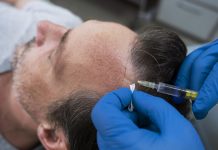Tattoos have long ceased to be a distinguishing mark of sailors and prisoners. Completely different people make tattoos to express themselves, to emphasize any part of their body, or, conversely, to hide a scar. After all, they may do this simply to be beautiful. In addition to well-known facts (pain or the importance of good sanitation while tattooing), the art of tattooing causes a lot of speculation. To most people, the information is not obvious.

Size does matter
- A small tattoo is rarely good. If this is a tight black circle with a diameter of 2 centimeters, it may be all right, but the more details the drawing has (contours, color transitions, and so on), the bigger it should be.
- This is important not only because of aesthetics. Thin contours (less than a couple of millimeters) maintain their shape worse and eventually begin to look smeared. If the tattoo is black, this flaw cannot be corrected.
- In turn, the size of the drawing dictates the place of its application, and there are styles that cannot be small. If you want a realistic portrait, you should place it on a shoulder, back, or any other large area.
Artists are selected according to their portfolio
Tattoo artists, just as designers or illustrators, almost always specialize in a certain style. This is what you should take advantage of. A familiar tattoo artist may offer a discount, but you are talking about a lifelong tattoo! If you want a Japanese dragon, look for the artist who works in this style and copes with it perfectly well.
It will surely hurt; the question is how much
Pain threshold is different for everyone. There are people who will howl after the first injection, whereas others may lie for three hours texting messages and watching films on their tablet PC without even wincing a single time while the tattoo machine is working. Both types are exceptions. In general, tattooing is a painful but bearable process.
The strength of sensations is affected by the duration of the session (the longer it lasts the more painful it becomes), using or not using anesthesia (an anesthetic cream), individual human characteristics and the location of the tattoo. There are places where it will be particularly unpleasant. There are also parts of the body where it is pointless to make a tattoo. It has nothing to do with pain, it’s just that the skin is changing too fast there, and the tattoo will soon get blurred.
A good tattoo costs a lot
The cost of a tattoo is usually measured in the hours of work, and the difference in price can be very big. The final sum of money is influenced by the experience of the artist, his fame and workload, the location of the tattoo studio, the size and complexity of the tattoo, the cost of materials. Occasionally, tattoo artists can make a tattoo for free (or offer a discount) if they really want to depict a particular pattern, but this is a rarity that is difficult to find.
It will take time
The time predicted by the artist is an expected period of work under ideal circumstances. How long the tattoo will take in reality is unknown. You may have to make a pause, rest and pluck strength for a new session. You may feel unwell. Maybe you have a skin, which makes tattooing more difficult (it happens), or which does not get colored well (this is also possible).
Here is an approximate (very approximate) prediction of the time needed:
- “A sleeve tattoo” (covering the hand from the top of the shoulder to the wrist) usually takes 6 sessions of 4 hours (at least).
- Shoulder / scapula – 6 hours
- Forearm – 4 hours (an anchor with a rose); 6 hours (a skull with a clock)
Making a tattoo is only half the work
When they say “this is for a lifetime”, it is not just about the picture. A tattoo is a part of your body that needs to be taken care of.
Your main enemy is the sun. A tattoo should be protected from it with the help of clothes or sunscreen (SPF 50+). Otherwise the picture (especially a colored one) will fade quickly.
The second enemy is our own laziness. A good tattoo artist will give you a set of instructions about taking care of your “new clothes.” Follow them strictly because the first two weeks will determine the fate of your tattoo. Think of this time as the post-operative period. Will you ride a bike with an unhealed leg? Do not hesitate: a tattoo is also an injury. Think of the thousands of injections per minute, piercing the epidermis and injecting the pigment into your dermis. Having decided to get a tattoo, you’d better approach the issue seriously.
For your information
- The skin is a living tissue. It changes and expands. Even in case of perfect care, the tattoo must be updated every 3-5 years. It will cost as much as the new one. And it will hurt the same.
- Moles are bypassed and hidden inside the picture while tattooing.
- Hair continues to grow on the site of a tattoo.
- If you have a scar, you should wait for at least a year before the place of the injury can be covered with a tattoo.
- At a session you should be sober, well-fed and after a sound sleep. Drinking alcohol is also forbidden on the eve of tattooing: it will make tattooing more painful, the bleeding will increase, and the healing process will slow down.
- Light fever and dizziness after a tattoo session are normal. This is the only side effect (except the pain and swelling), which is acceptable if all the rules of sanitation and maintenance are followed.
- At least two weeks should pass between the two tattooing sessions in the same area (for example, if you want to get a “sleeve tattoo”).
- Laser can be used to remove a tattoo by 90-95%. It will be more painful; it will take more time and will be more expensive than the tattoo itself.










